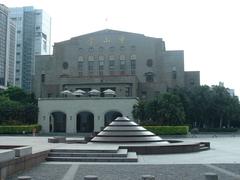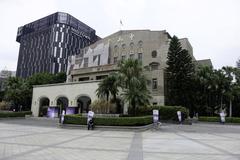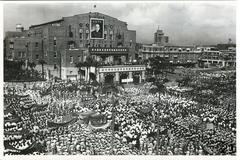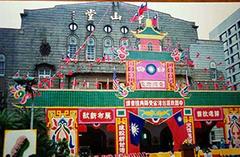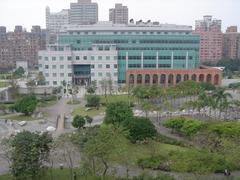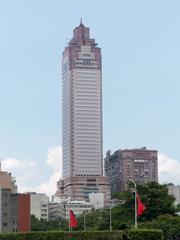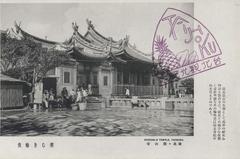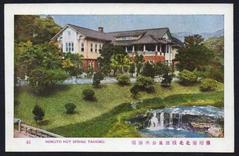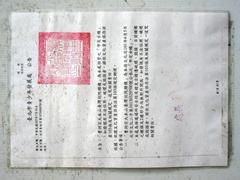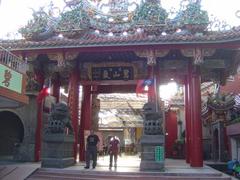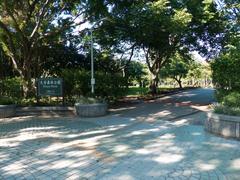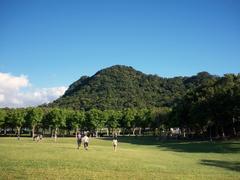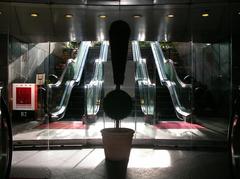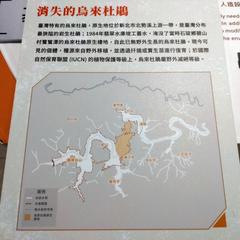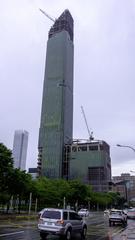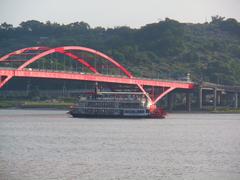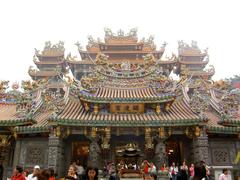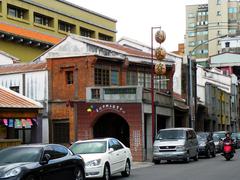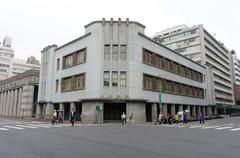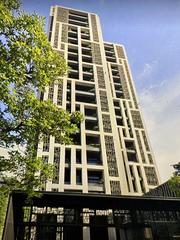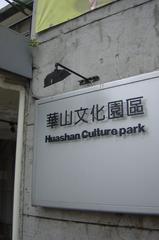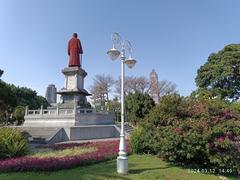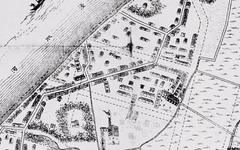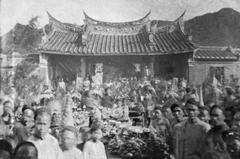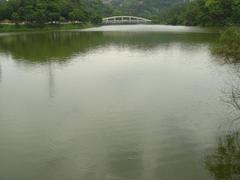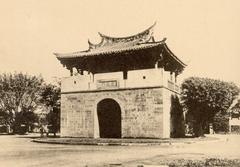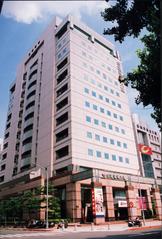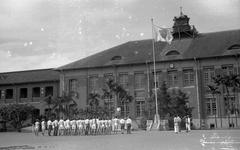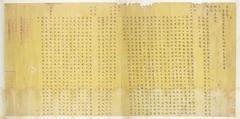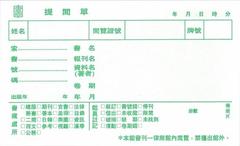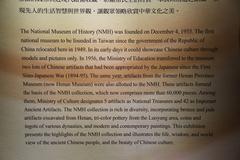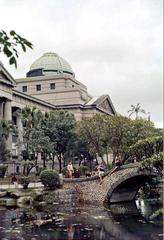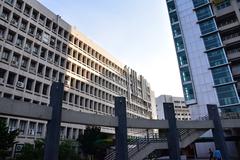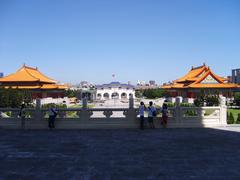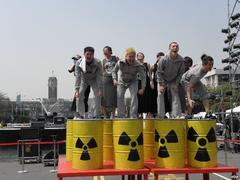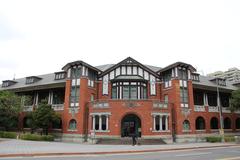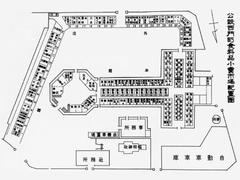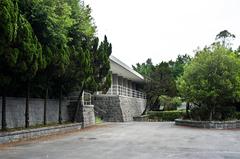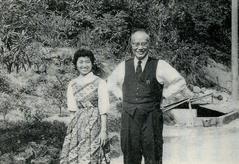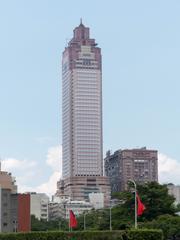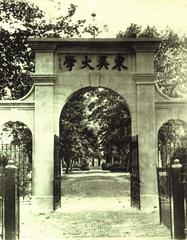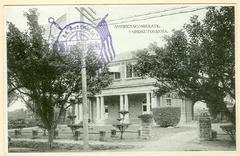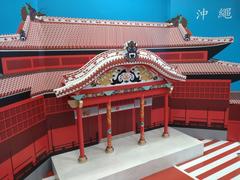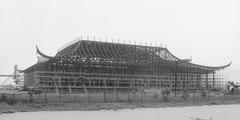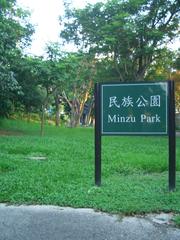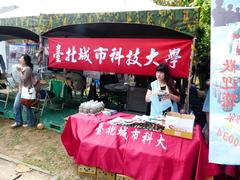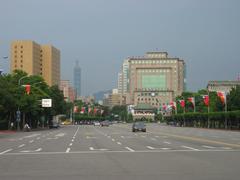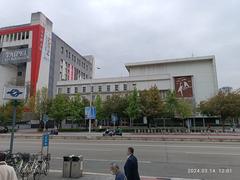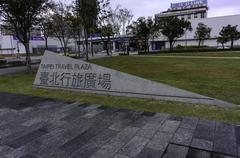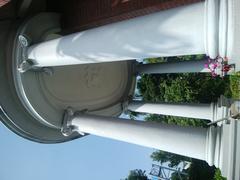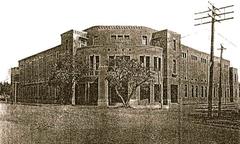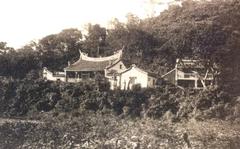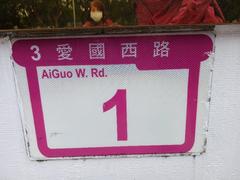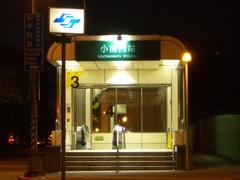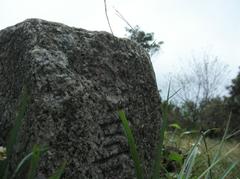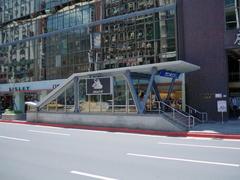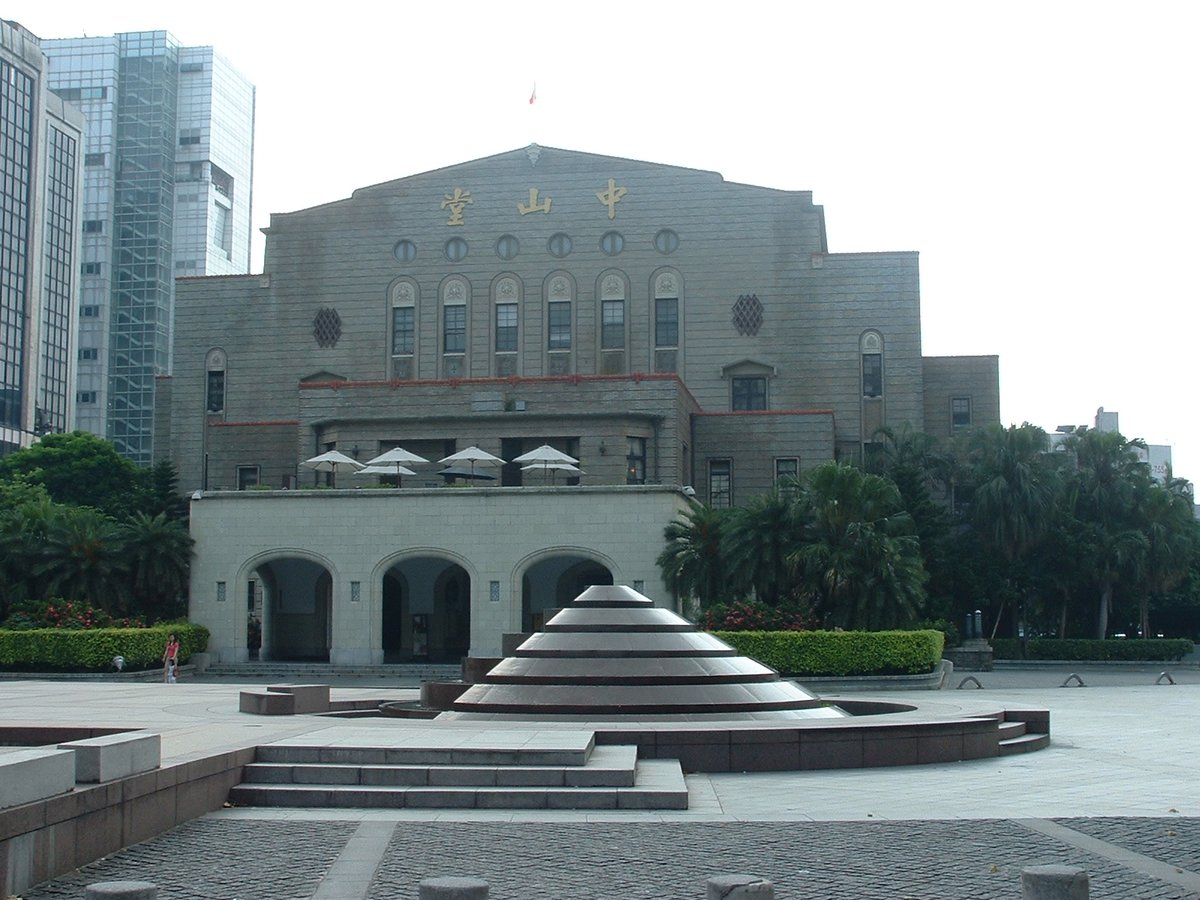
Zhongshan Hall Visiting Hours, Tickets, and Historical Significance
Date: 16/08/2024
Introduction
Zhongshan Hall stands as a prominent historical and cultural landmark in Taipei, Taiwan. Originally known as the Taipei City Public Auditorium, this iconic structure was completed in 1936 during the Japanese colonial period to commemorate the ascension of Emperor Hirohito (Wikipedia). Designed by Japanese architect Ide Kaoru, the building seamlessly blends Western and traditional Japanese architectural elements. Following the end of Japanese rule in 1945, the hall was renamed in honor of Sun Yat-sen, the founding father of the Republic of China, and has since been a focal point of Taiwan’s political and cultural history (Taipei Times).
Zhongshan Hall has hosted numerous significant events, including the formal surrender of Japanese forces in Taiwan on October 25, 1945, and several presidential inaugurations and diplomatic ceremonies (Department of Cultural Affairs). Today, it continues to serve as a cultural hub, offering a venue for concerts, theater performances, and art exhibitions. The hall’s grand neoclassical façade, intricate woodwork, and traditional motifs make it an architectural marvel worth exploring.
This comprehensive guide provides all the essential information you need for a memorable visit to Zhongshan Hall. From its rich history and architectural beauty to practical visitor tips, including opening hours, ticket details, and nearby attractions, this guide ensures a well-rounded experience. Whether you’re a history enthusiast, an architecture aficionado, or simply a curious traveler, Zhongshan Hall offers a unique glimpse into Taiwan’s past and cultural heritage.
Table of Contents
- [History of Zhongshan Hall](#history-of-zhongshan-hallhistory-of-zhongshan-hall)
- [Origins and Construction](#origins-and-constructionorigins-and-construction)
- [Post-War Significance](#post-war-significancepost-war-significance)
- [Architectural Features](#architectural-featuresarchitectural-features)
- [Cultural and Political Events](#cultural-and-political-eventscultural-and-political-events)
- [Visitor Tips for Zhongshan Hall](#visitor-tips-for-zhongshan-hallvisitor-tips-for-zhongshan-hall)
- [Opening Hours and Admission](#opening-hours-and-admissionopening-hours-and-admission)
- [Guided Tours](#guided-toursguided-tours)
- [Nearby Attractions](#nearby-attractionsnearby-attractions)
- [Accessibility](#accessibilityaccessibility)
- [Photography and Etiquette](#photography-and-etiquettephotography-and-etiquette)
- [Dining Options](#dining-optionsdining-options)
- [Souvenirs and Shopping](#souvenirs-and-shoppingsouvenirs-and-shopping)
- [Special Events and Exhibitions](#special-events-and-exhibitionsspecial-events-and-exhibitions)
- [Getting There](#getting-theregetting-there)
- [Visitor Etiquette](#visitor-etiquettevisitor-etiquette)
- [Contact Information](#contact-informationcontact-information)
- [FAQs](#faqsfaqs)
- [What are the visiting hours for Zhongshan Hall?](#what-are-the-visiting-hours-for-zhongshan-hallwhat-are-the-visiting-hours-for-zhongshan-hall)
- [Is there an admission fee for Zhongshan Hall?](#is-there-an-admission-fee-for-zhongshan-hallis-there-an-admission-fee-for-zhongshan-hall)
- [Are guided tours available?](#are-guided-tours-availableare-guided-tours-available)
- [What are some nearby attractions to Zhongshan Hall?](#what-are-some-nearby-attractions-to-zhongshan-hallwhat-are-some-nearby-attractions-to-zhongshan-hall)
- [Is Zhongshan Hall accessible to visitors with disabilities?](#is-zhongshan-hall-accessible-to-visitors-with-disabilitiesis-zhongshan-hall-accessible-to-visitors-with-disabilities)
- [Conclusion](#conclusionconclusion)
- [References](#referencesreferences)
History of Zhongshan Hall
Origins and Construction
Zhongshan Hall, originally known as the Taipei City Public Auditorium, was constructed during the Japanese colonial period in Taiwan. The hall was completed in 1936 to commemorate the ascension of Emperor Hirohito. The building was designed by Japanese architect Ide Kaoru, who incorporated both Western and traditional Japanese architectural elements. The hall’s construction was part of a broader effort by the Japanese colonial government to modernize Taipei’s infrastructure and cultural facilities (Wikipedia).
Post-War Significance
After World War II and the end of Japanese rule in Taiwan, the building was renamed Zhongshan Hall in honor of Sun Yat-sen, the founding father of the Republic of China. The hall has since played a significant role in Taiwan’s political and cultural history. It was the site of the formal surrender of Japanese forces in Taiwan to the Republic of China on October 25, 1945, marking the end of 50 years of Japanese colonial rule (Taipei Times).
Architectural Features
Zhongshan Hall is an architectural marvel that blends Western and Eastern design elements. The building features a grand façade with a neoclassical style, characterized by its symmetrical design and the use of columns and pediments. Inside, the hall boasts a large auditorium with a seating capacity of over 2,000, making it one of the largest venues of its kind in Taipei at the time of its construction. The interior is adorned with intricate woodwork and traditional Japanese motifs, reflecting the cultural influences of the period (Department of Cultural Affairs).
Cultural and Political Events
Over the decades, Zhongshan Hall has hosted numerous significant events. It has been the venue for presidential inaugurations, state banquets, and important political meetings. The hall has also served as a cultural hub, hosting concerts, theater performances, and art exhibitions. Its historical and cultural significance makes it a must-visit for anyone interested in Taiwan’s rich history (Taipei Times).
Visitor Tips for Zhongshan Hall
Opening Hours and Admission
Zhongshan Hall is open to the public from 9:00 AM to 5:00 PM, Tuesday through Sunday. It is closed on Mondays and public holidays. Admission to the hall is free, but certain special exhibitions or events may require a ticket. Visitors are advised to check the official Zhongshan Hall website for the latest information on opening hours and ticketing.
Guided Tours
For those interested in a more in-depth understanding of the hall’s history and architecture, guided tours are available. These tours are conducted in both Mandarin and English and provide detailed insights into the building’s historical significance and architectural features. Tours typically last about an hour and can be booked in advance through the hall’s official website.
Nearby Attractions
Zhongshan Hall is conveniently located in the heart of Taipei, making it easy to visit other nearby attractions. The Ximending Shopping District is just a short walk away and offers a vibrant mix of shops, restaurants, and entertainment options. The historic Longshan Temple is also nearby and provides a fascinating glimpse into Taiwan’s religious and cultural heritage.
Accessibility
Zhongshan Hall is accessible to visitors with disabilities. The building is equipped with ramps and elevators, and accessible restrooms are available. Visitors with specific accessibility needs are encouraged to contact the hall in advance to ensure a smooth visit.
Photography and Etiquette
Photography is allowed inside Zhongshan Hall, but visitors are asked to be respectful and avoid using flash photography, especially during events or performances. As the hall is a historical site, visitors are also requested to refrain from touching or leaning on the exhibits and architectural features.
Dining Options
While there are no dining facilities within Zhongshan Hall itself, the surrounding area offers a wide range of dining options. From traditional Taiwanese street food to international cuisine, visitors will find plenty of choices to suit their tastes. The nearby Ximending Night Market is a popular spot for sampling local delicacies.
Souvenirs and Shopping
For those looking to take home a memento of their visit, the hall’s gift shop offers a selection of souvenirs, including books, postcards, and locally made crafts. The shop also features items related to Sun Yat-sen and Taiwan’s history, making it a great place to find unique and meaningful gifts.
Special Events and Exhibitions
Zhongshan Hall regularly hosts special events and exhibitions, ranging from art shows to historical displays. These events provide an excellent opportunity to experience Taiwan’s vibrant cultural scene. Visitors are encouraged to check the hall’s official website or social media channels for information on upcoming events.
Getting There
Zhongshan Hall is easily accessible by public transportation. The nearest MRT station is Ximen Station on the Bannan Line (Blue Line), which is just a short walk from the hall. For those traveling by bus, several routes stop near the hall, making it convenient to reach from various parts of the city. For detailed directions and transportation options, visitors can refer to the Taipei Metro website.
Visitor Etiquette
As a site of historical and cultural significance, visitors to Zhongshan Hall are asked to observe proper etiquette. This includes speaking quietly, refraining from eating or drinking inside the hall, and respecting any posted signs or guidelines. By following these simple rules, visitors can help preserve the hall’s beauty and historical integrity for future generations.
Contact Information
For any inquiries or additional information, visitors can contact Zhongshan Hall directly. The hall’s contact details, including phone numbers and email addresses, are available on their official website. The staff are friendly and helpful, and can assist with any questions or special requests.
FAQs
What are the visiting hours for Zhongshan Hall?
Zhongshan Hall is open from 9:00 AM to 5:00 PM, Tuesday through Sunday. It is closed on Mondays and public holidays.
Is there an admission fee for Zhongshan Hall?
Admission to Zhongshan Hall is free, but certain special exhibitions or events may require a ticket.
Are guided tours available?
Yes, guided tours are available in both Mandarin and English. Tours typically last about an hour and can be booked in advance through the hall’s official website.
What are some nearby attractions to Zhongshan Hall?
Nearby attractions include the Ximending Shopping District and the historic Longshan Temple.
Is Zhongshan Hall accessible to visitors with disabilities?
Yes, Zhongshan Hall is equipped with ramps, elevators, and accessible restrooms.
Conclusion
Zhongshan Hall is a cornerstone of Taipei’s historical and cultural landscape. From its rich history to its architectural splendor and its role in significant political and cultural events, Zhongshan Hall offers visitors an enriching experience. Whether you’re interested in history, architecture, or culture, Zhongshan Hall is a must-visit site in Taipei. Check the official website for the latest information and plan your visit today.
References
- Wikipedia. (n.d.). Zhongshan Hall. Retrieved from Wikipedia
- Taipei Times. (2021, November 21). The many faces of Zhongshan Hall. Retrieved from Taipei Times
- Department of Cultural Affairs. (n.d.). Zhongshan Hall. Retrieved from Department of Cultural Affairs
